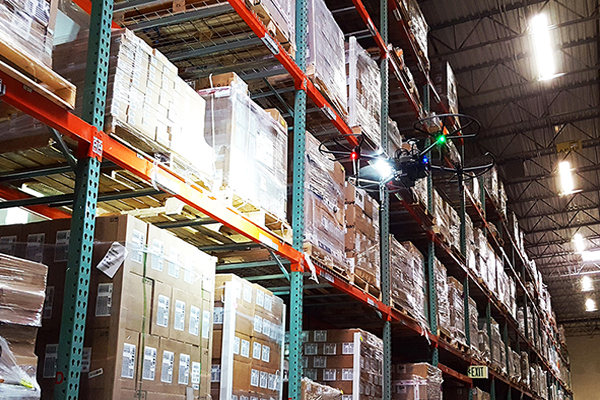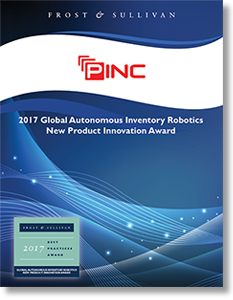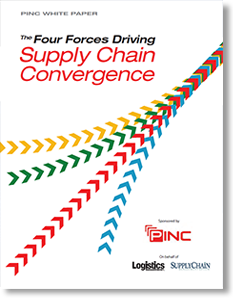Can Warehouse Robots Help You Manage Your Inventory Better?
In every warehouse or retail store, there is an opportunity to add value, and the good news is that robotics and drones provide payback within three to six months, versus five to 10 years for AS/RS systems.


In the United States, 250,000 manufacturing plants and warehouses support the activities of 4 million retail stores and e-commerce websites - and all of these operations carry inventory.
But in the warehouses, less than 10 percent are using automated storage and retrieval systems (AS/RS) to manage and move their inventories.
That means the vast majority are still using racks and other storage solutions that require a lot of floor space (read: high real estate costs) and human labor.
The nimblest of these operations, however, are extracting the full value of their real estate by integrating automation that ramps up their existing process, making them more productive without the need for huge capital outlays.
In every warehouse or retail store, there is an opportunity to add value, and the good news is that robotics and drones provide payback within three to six months (versus five to 10 years for AS/RS systems).
There is a lot of value that can be eked out of just overlaying a piece of advanced technology in an existing facility, and a lot of smart companies are already benefitting from that. Anytime you can add more value the end result is going to be positive, irrespective of what environment you’re operating in or what market challenges you are dealing with.
The road to automation isn’t going to be easy, nor is it going to be readily embraced by today’s supply chain organizations. In polling the executives that it works across numerous industries, PINC has found that two-thirds of logistics spend is allocated to transportation and the remainder to warehousing. This is likely why so many companies are focused on innovations like self-driving vehicles.
Interestingly enough, transportation only moves 10 percent of the average firm’s inventory, while 90% is sitting on the shelves or trailers at manufacturing plants, distribution centers, or out in a store. That tells us that companies are still carrying too much inventory and that they’re not necessarily doing a good job of managing inventory levels. They are also struggling with out-of-stocks, poor accuracy, inventory shrinkage, and other problems associated with ineffective inventory management.
To the company that is still using clipboards, spreadsheets, and outdated manual electronic readers to track inventory, it’s time to wipe the slate clean and get up to speed with digital inventory that is powered by advanced technologies like robots and drones.
However, we are not talking about zip-tying a barcode scanner to a quadcopter and hoping that it captures something useful during its flight; we are talking about a plug-and-play aerial robot that is:
- Enabled by a fully autonomous indoor navigation system that allows the warehouse drone to autonomously navigate through warehouses and avoid obstacles.
- Powered by an advanced computer vision and sensors combined with artificial intelligence which detect, identify, and locate pallets into rack locations.
- Automatically uploading resulting scans to the cloud and synchronizes it to the WMS or any other inventory management system.
- Scalable and increasing inventory accuracy, reducing operational expenses, and improving employee safety across the company’s distribution network.
The good news is that if a human being can visually scan the inventory that is in a warehouse or store, then a robot can be trained to do the same thing. However, robots can operate 24/7, three hundred times faster, and provide accuracy levels never achieved before.
I understand that there is no easy way to answer my title question, however, what we can speak to with a level of certainty is that organizations that are investing in digital inventory technology are gaining an edge in understanding inventory levels and being able to move inventory faster throughout the supply chain. These companies are also redirecting their staff to handle high-value activities and empowering their teams with rich information, which can then be revisited at any point and time and can be used to make better decisions.
About the Author

Matt Yearling joined PINC Solutions as chief executive officer in March 2013 and is responsible for the overall strategic and operational management of the company. Matt’s past roles include vice president and general manager of Encryption Products at Symantec Corporation, senior vice president of Global CRM Product Development at Sage Inc., Chief Technology Officer for Embarcadero Systems Corp (a Ports America company). As vice president of Oracle On Demand Matt played a pivotal role in making it Oracle’s fastest growing line-of-business.
Related Article: The Emerging Role for Warehouse Drones in the Supply Chain
Related Resources
Global Autonomous Inventory Robotics New Product Innovation Award
This best practices research paper details the PINC Air inventory robotics solution with its quick deployment model, faster inventory velocity, product ingenuity, and rapid ROI underscoring the decision for PINC to win Frost & Sullivan’s 2017 New Product Innovation Award. Download Now!
The Four Forces Driving Supply Chain Innovation
When supply chain professionals discuss supply chain execution, their focus is typically put on transportation management systems and warehouse management systems, the yard management systems capability and importance is mistakenly undervalued. Download Now!

Article Topics
Latest in Materials Handling
Geek+ and System Teknik deploy PopPick solution for pharmacy group Med24.dk Beckhoff USA opens new office in Austin, Texas Manhattan Associates selects TeamViewer as partner for warehouse vision picking ASME Foundation wins grant for technical workforce development The (Not So) Secret Weapons: How Key Cabinets and Asset Management Lockers Are Changing Supply Chain Operations MODEX C-Suite Interview with Harold Vanasse: The perfect blend of automation and sustainability Consultant and industry leader John M. Hill passes on at age 86 More Materials HandlingSubscribe to Materials Handling Magazine

Find out what the world's most innovative companies are doing to improve productivity in their plants and distribution centers.
Start your FREE subscription today.
April 2024 Modern Materials Handling

Latest Resources












